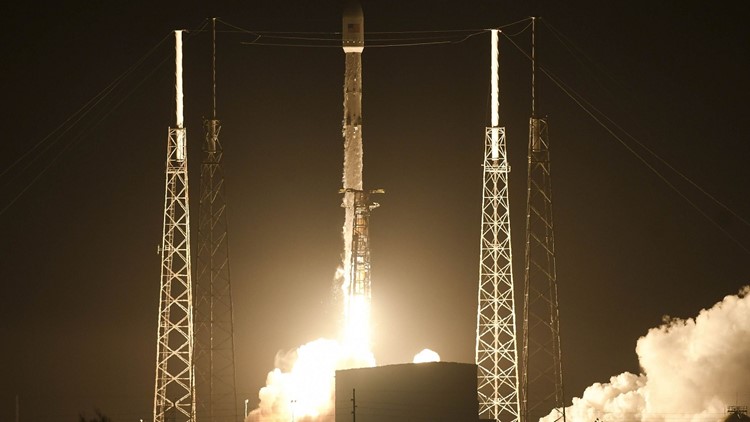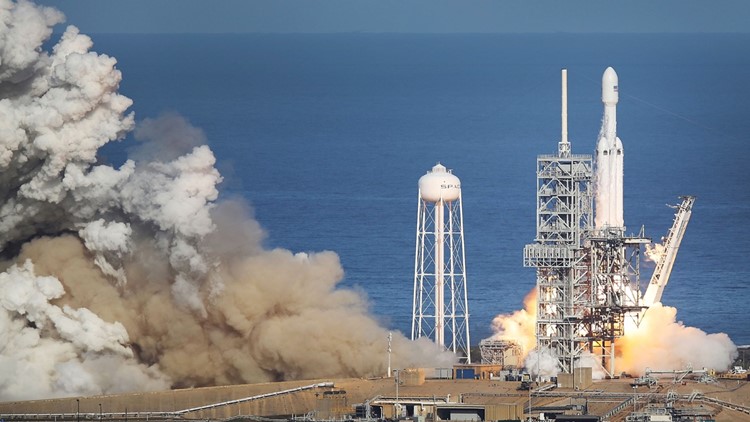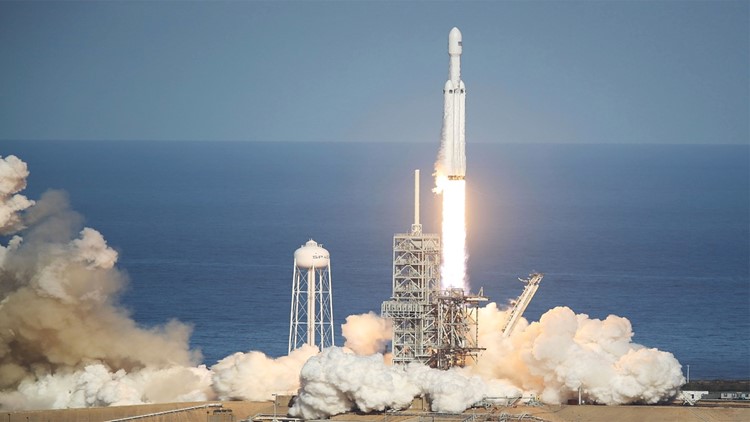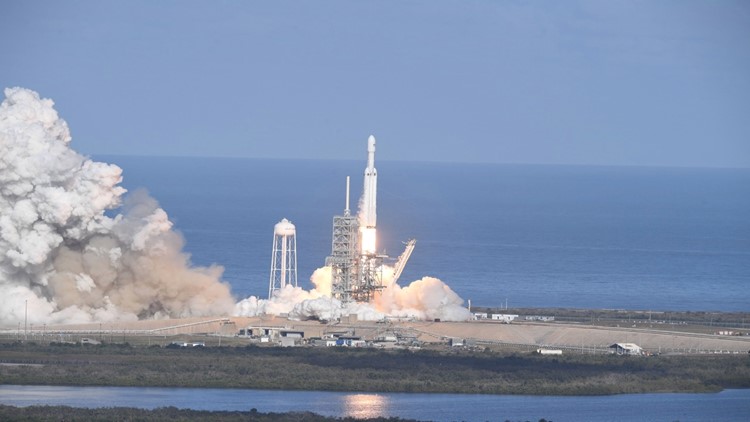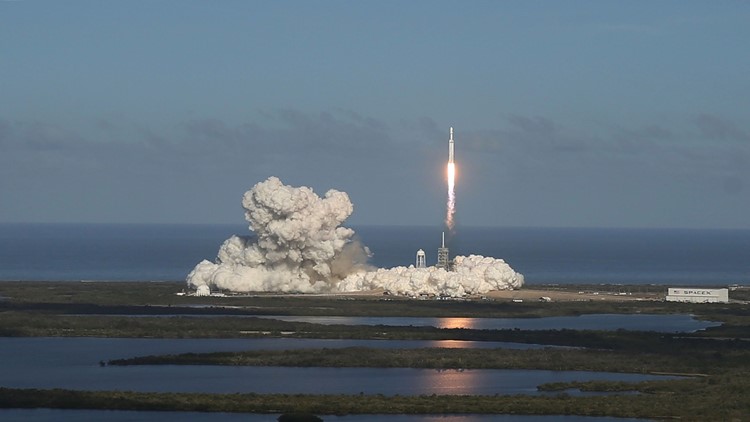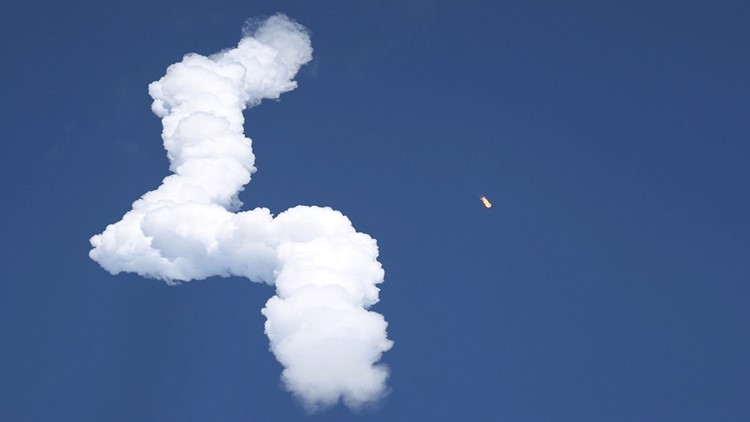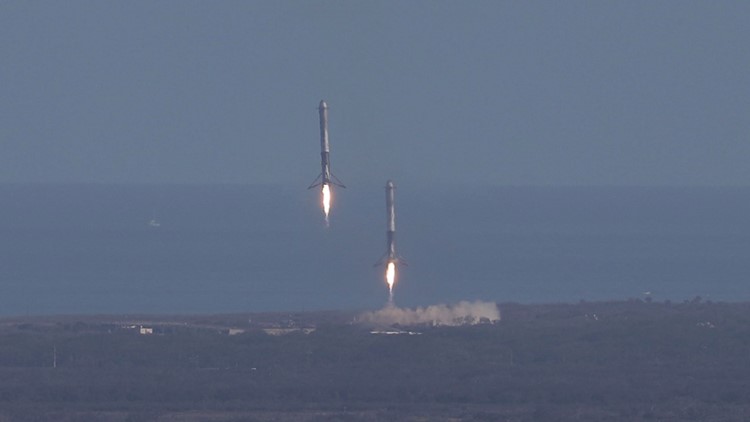CAPE CANAVERAL, Fla. -- SpaceX notched its 50th successful Falcon 9 rocket mission early Tuesday, lifting the heaviest communications satellite the rocket has carried yet from Cape Canaveral Air Force Station.
Igniting nine Merlin engines at 12:33 a.m., the 230-foot rocket roared into darkness from Launch Complex 40 with a Spanish satellite Elon Musk described as "almost the size of a city bus."
Thirty-three minutes later, the rocket released Spanish satellite operator Hispasat's 30W-6 spacecraft, weighing more than 13,000 pounds, on its way to an orbit 22,300 miles over the equator.
"Very proud of the SpaceX team!" Musk said on Twitter. "Can’t believe it’s been fifty Falcon 9 launches already. Just ten years ago, we couldn’t even reach orbit with little Falcon 1."
Rough seas prevented SpaceX from attempting to land the Falcon 9's first-stage booster, which was expected to be destroyed when it splashed down in 26-foot waves.
The rocket's 50th successful mission took flight less than eight years after the first launched from the same pad on June 4, 2010, flying a demonstration mission for NASA.
SpaceX then was unproven startup regarded with skepticism by much of the industry — especially CEO Elon Musk’s brash promises to land and reuse rockets. It had been on the brink of failure in 2008 before a successful launch of the much smaller Falcon 1 rocket, after several mishaps, led to a major NASA contract.
Flash forward to today: SpaceX has landed Falcon boosters 23 times and re-flown boosters nine times, including two on last month’s inaugural launch of the Falcon Heavy, the world’s new most powerful rocket.
The Falcon 9 achieved 50 successful launches more than four years faster than United Launch Alliance’s Atlas V, which debuted in 2002 and has been the U.S. government’s workhorse for national security and high-value science payloads.
ULA, a Boeing-Lockheed Martin joint venture, recently completed the 76th Atlas V mission without a major failure. But with SpaceX planning to launch as many as 30 times this year, the lower-cost Falcon 9 may not take long to catch up.
SpaceX’s march to 50 successful Falcon launches was not without setbacks.
One Falcon 9 rocket broke apart just over two minutes into a 2015 flight for NASA. Another exploded on its launch pad in 2016, destroying a commercial satellite.
But SpaceX rebounded last year with an 18-mission surge, and aims to exceed that total this year.
The company's biggest test awaits: A first launch of NASA astronauts to the International Space Station on a test flight tentatively targeted for December.
The Hispasat satellite, built by SSL, will provide high-definition broadcasting and broadband Internet service to Europe, the Mediterranean and the Americas.
“This capacity will enable us to contribute to the reduction of the digital divide on three continents, and that is something that fills us with satisfaction,” said Antonio Abad, Hispasat’s chief technology officer.
The satellite is Madrid-based Hispasat’s 11th in orbit, concluding an expansion that more than doubled the company's fleet over the past five years.
Photos: SpaceX launches Falcon Heavy rocket, sticks 2 landings
The mission is the latest example of SpaceX bringing a commercial launch and an international customer back to Cape Canaveral. Those types of missions largely moved overseas while ULA focused on U.S. government missions.
Before Tuesday, Hispasat’s previous Cape launches were on 2000 and 2002 on Atlas rockets.
Tuesday's launch was delayed from Feb. 25 for tests of the pressurization system in the Falcon 9 rocket’s nose cone, which worked as planned during the launch.
Following ULA’s launch last Thursday of the GOES-S weather satellite, the mission was the second in five days from the Eastern Range, and the sixth overall from the Cape this year.
The Range managed by the Air Force's 45th Space Wing now enters a lull until early April, when SpaceX could return with another launch of International Space Station supplies.


